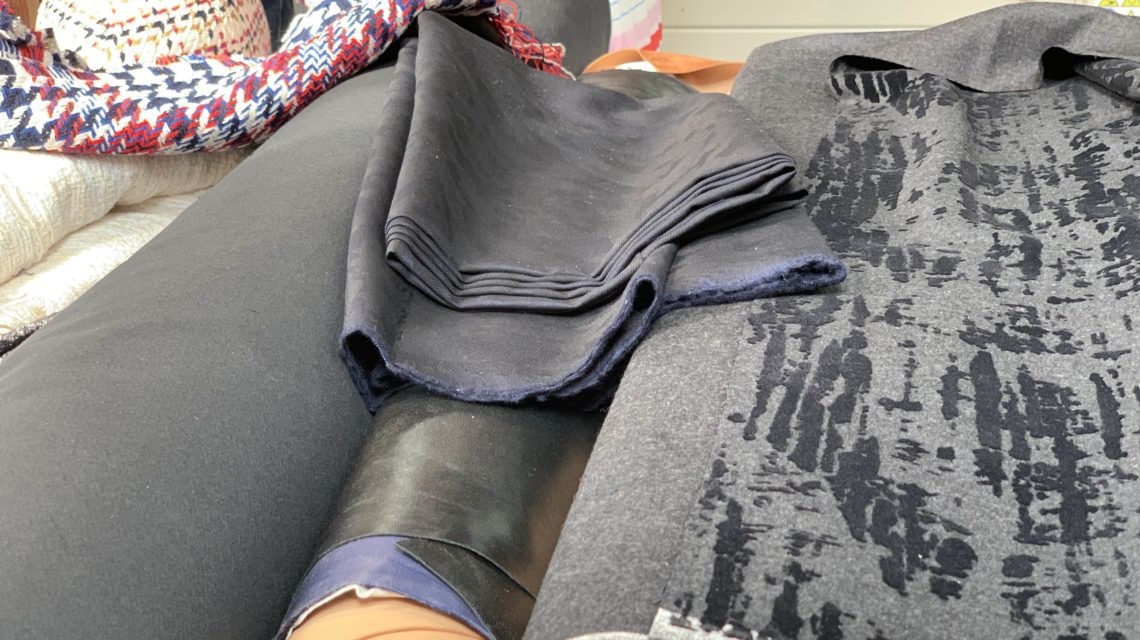Nos casquettes Headoniste subliment des tissus d’exception 30 octobre 2020 – Publié dans: Les valeurs d'Headoniste
Chez Headoniste, nous privilégions dans la mesure du possible les circuits courts. Nos tissus d’exception sont français ou italiens. Nous utilisons des matières recyclées pour les labellisations, ainsi que sur certains de nos tissus, comme les lainages.
Nous faisons le choix de partenaires engagés, privilégiant les matières naturelles et l’écoresponsabilité, garantissant une complète traçabilité de leurs produits.
Nos tissus d’exception Jacquards
Le jacquard n’est pas un tissu mais une technique de tissage permettant de réaliser tous types de motifs. Le tissu est obtenu par entrecroisements de fils disposés dans la chaîne (fils verticaux) et ceux disposés dans la trame (fils horizontaux).
Le tissage en relief des motifs augmente l’épaisseur et la solidité des matériaux tout en leur conférant une élégance et une noblesse propre à cette technique. Le tissu ne se froisse pas et est facile à entretenir.
Toutefois, certains jacquards sont tissés de manière plus large pour donner un côté plus rustique et traditionnel au tissu, il est alors recommandé de faire attention à vos bagues mesdames, qui pourraient accrocher la matière.
Nos tissus jacquard sont fabriqués en région Rhône-Alpes, ils s’inscrivent dans la tradition du tissage Lyonnais.
Nos tissus d’exception en laine
Nous choisissons les laines les plus fines pour leurs propriétés exceptionnelles : thermorégulatrice, respirante, absorbante et hygiénique.
Nos laines sont recyclables, réutilisables et biodégradables.
Elles proviennent de mouton mérinos d’Australie et de Nouvelle-Zélande, pays d’excellence de la laine où la finesse des fibres permet d’obtenir des tissus plus doux et plus légers.
Nos tissus sont fabriqués au sein d’entreprises partenaires du CCMI (Cashmere and Camel Hair Manufacturers Institute), œuvrant pour vérifier et défendre les fibres nobles (cachemire, mohair, alpaga) et la laine fine ou superfine (via le Superfine Wool Council).
Nos tissus en laine recyclée
Headoniste accorde une attention particulière à l’écologie et vous propose des laines recyclées.
Elles sont fabriquées à partir de fibres recyclées dans un pourcentage minimum de 60 % et conservent les mêmes caractéristiques que les nouvelles fibres, leur qualité est optimale et identique à des tissus neufs.
Nous avons choisi la région de Prato en Italie car, depuis des siècles, elle regroupe des industriels qui sont spécialisés dans la régénération de la laine ainsi que d’autres textiles, leur technique développée est unique au monde.
Par ailleurs, l’impact environnemental de la technologie de recyclage est minimal. Toutes les eaux usées et les déchets générés sont éliminés selon les règles recommandées par la CEE. Le procédé ne crée aucune introduction de CO2 dans l’environnement. Grâce au recyclage des fibres textiles, des milliers de tonnes de tissus ne sont pas éliminées comme des déchets mais sont réintroduites dans le cycle de production, préservant l’environnement et réduisant les émissions toxiques des incinérateurs. De plus, l’utilisation de laine recyclée réduit les exigences d’utilisation des terres pour le pâturage des moutons.

